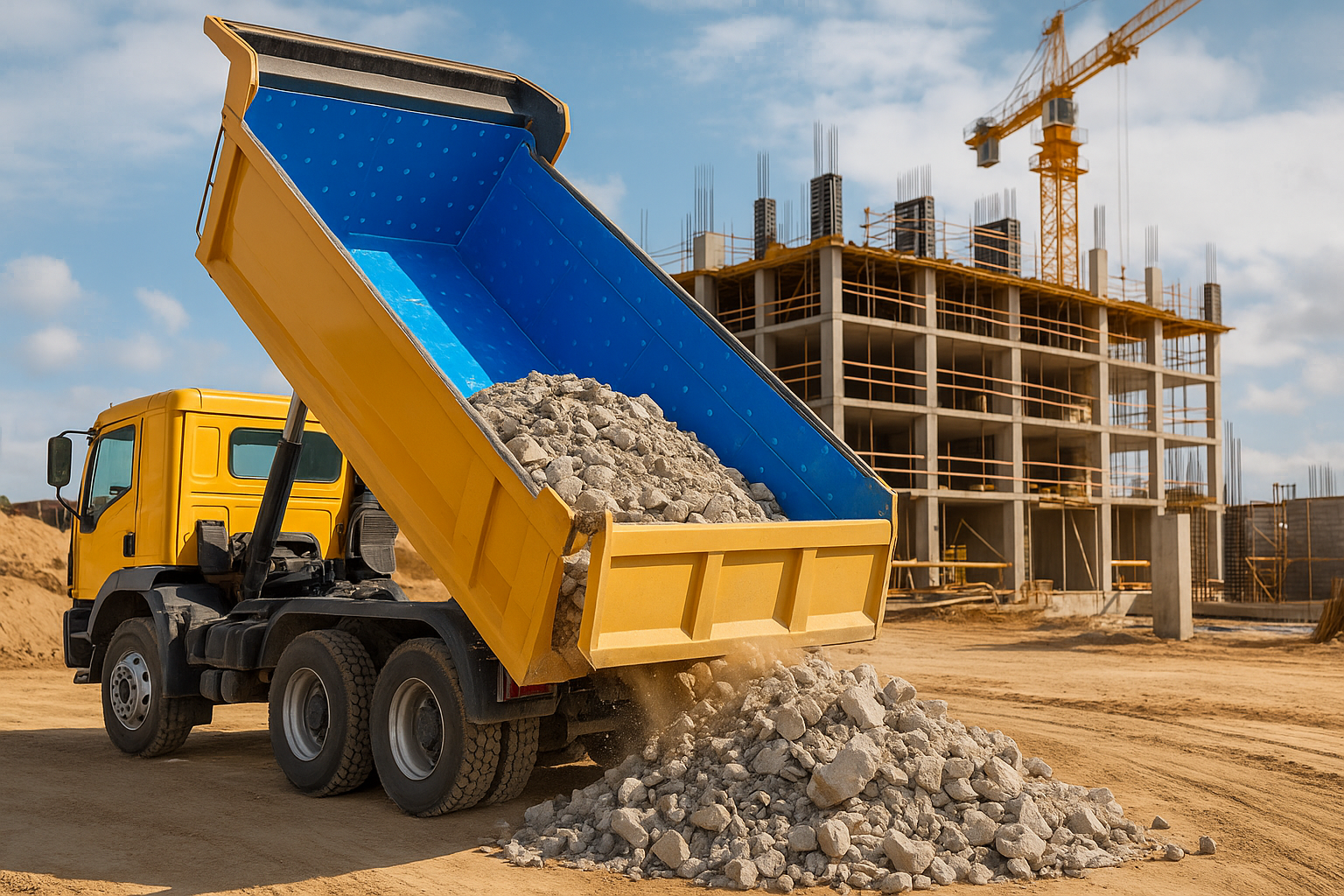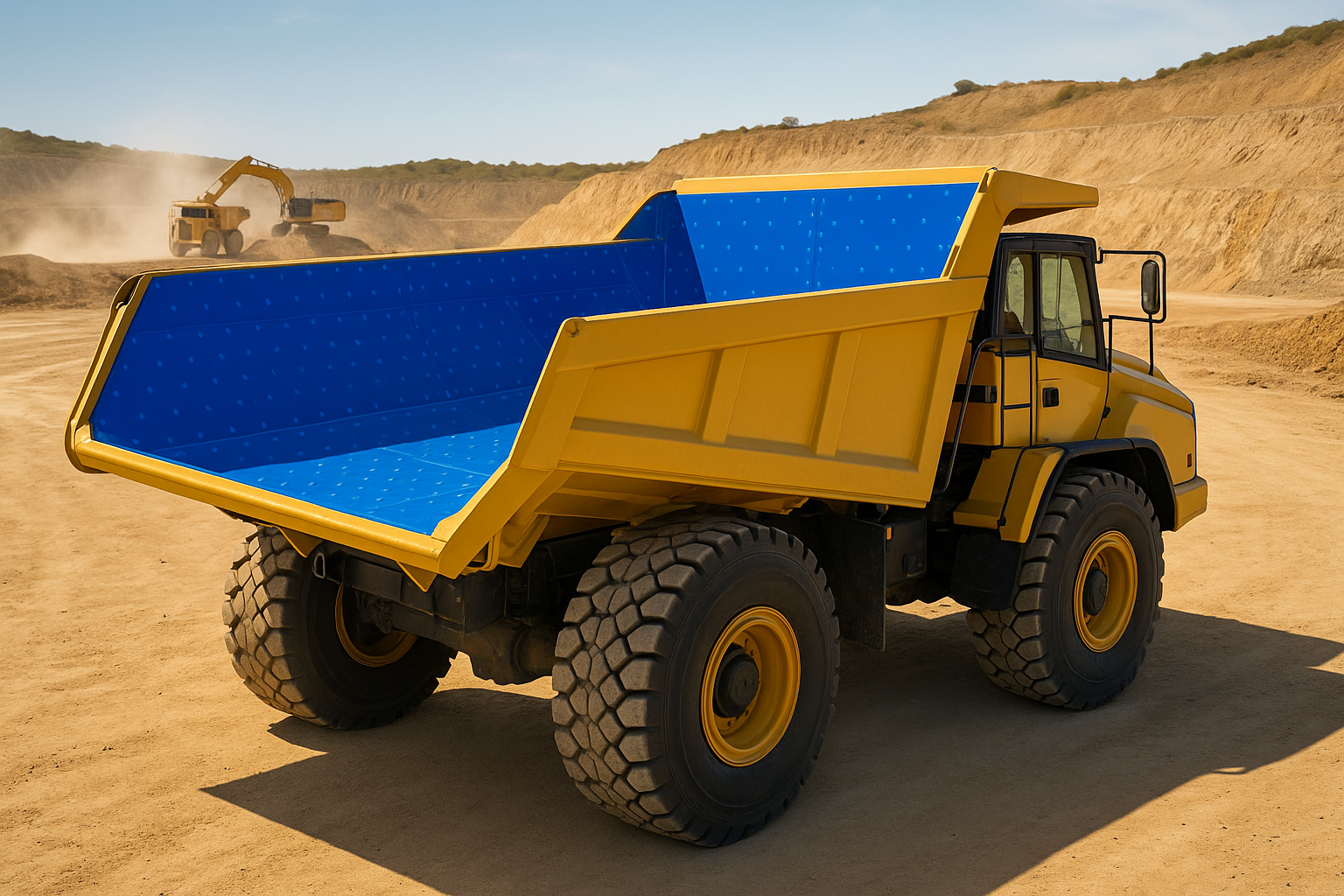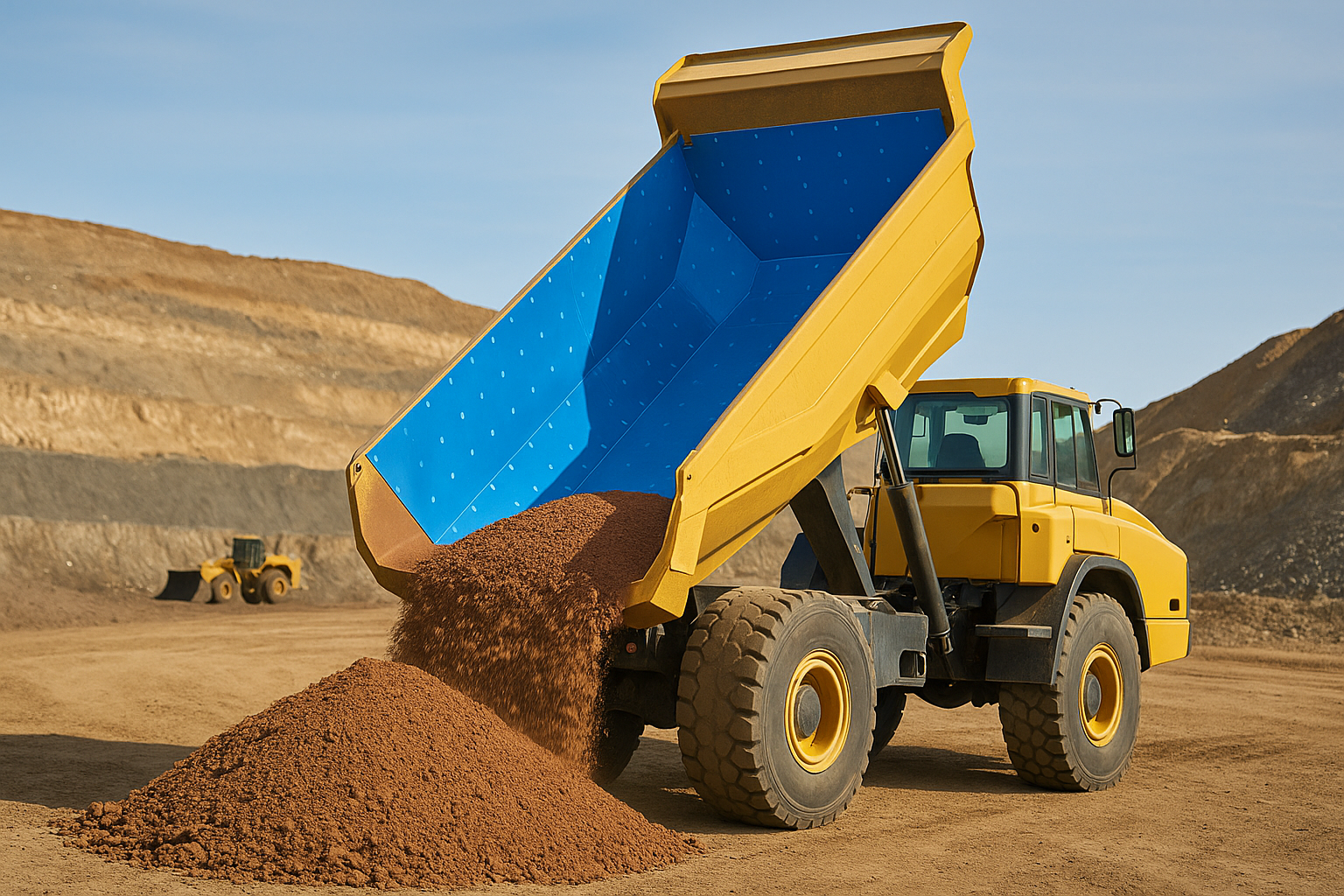At a glance
- Install a non-stick liner like OKUSLIDE® to reduce friction and prevent buildup.
- Use smart digging techniques like proper angles and avoiding overloading to reduce material sticking.
- Inspect regularly and repair or replace liners as needed for long-term performance.
Excavators constantly deal with wet clay, compact soil, debris, and similar materials in excavation, mining, and construction operations. Dirt sticking stubbornly to the bucket liner is one of the major challenges for excavator operators. It unnecessarily increases downtime because of frequent cleaning needs, slowing down the workflow. Moreover, material buildup in the excavator bucket causes corrosion, which accelerates equipment wear.
However, with the right techniques and some basic upgrades, you can keep your excavator bucket liner free from dirt. In this guide, we’ll explore why dirt sticks, how to prevent it, and the best solutions, like OKUSLIDE® non-stick liners, to keep your excavator operating at peak performance.
Why Dirt Sticks To The Excavator Bucket Liner
Knowing why material sticks to your bucket is the first step to solving the problem. Several factors combine to create a dirt buildup, such as soil type, moisture content, bucket material, surface texture, and environmental conditions.
Clay-heavy soil has a high adhesion factor, so it is more likely to stick to the surface. Similarly, wet or damp conditions create a mud-like texture that clings to the bucket surface. Likewise, frozen soil in colder climates can bond tightly to the liner, requiring extra effort to remove.
When it comes to the bucket’s material and surface texture, rough or porous bucket liners increase friction, allowing material to adhere more easily. Dirt is more likely to adhere to standard steel buckets if liners or coatings are not applied.
Environmental conditions like humidity and temperature changes can affect how dirt behaves inside the bucket. For instance, the soil becomes stickier in humid conditions, and cold temperatures freeze wet dirt to the bucket, making its removal difficult. Rain and snow also make material heavier and stickier, increasing the resistance of loads.
Methods To Keep Dirt From Sticking In An Excavator Bucket Liner
The right solutions will prevent dirt from sticking and keep your excavator bucket clean and working effectively for a long time. There are several methods to achieve a dirt-free excavator bucket: some include upgrading to a non-stick liner, while others are operational and maintenance techniques to avoid dirt sticking to the bucket.
Let’s learn about them in detail.
Using A Non-Stick Bucket Liner
Among the most effective solutions to reduce dirt adhesion in excavator buckets is the installation of a high-performance, non-stick bucket liner such as OKUSLIDE®. OKUSLIDE®, made from ultra-high molecular weight polyethylene (UHMWPE), offers superior friction reduction for easy material flow in excavation.
OKUSLIDE® liners are 60% more slippery than alloys and 70% more slippery than steel, which allows for smooth handling of material without sticking to the surface. OKUSLIDE® liners are also abrasion-resistant to extend the service life of the bucket and corrosion-resistant to avoid wear and tear over time.
Operational Techniques To Minimise Buildup
Even the best bucket liners may not perform at their best if they’re not used properly. So, operators must use smart digging techniques, such as optimising digging angles, shaking or tapping the bucket, and avoiding overloading, to further reduce material sticking.
To optimise digging angles, keep the bucket slightly curled while cutting into the soil. This prevents unnecessary soil compression and buildup. A quick bucket shake before dumping can dislodge excess dirt. Tapping the bucket against a hard surface can help remove stuck material. Overfilling your bucket increases the chances of soil sticking due to compression, so it’s best to avoid overloading.
Maintenance To Keep The Bucket-Liner Free from Dirt
Regular maintenance will provide long service and prevent excessive dirt accumulation. Make sure to inspect daily, apply proper cleaning practices, and replace or repair the liner to prevent material buildup from damaging your excavator bucket.
Effective cleaning practices, such as pressure washing or steam cleaning, easily remove dried mud after prolonged use. You can also use scraping tools, but you should be careful not to damage the liner while using such tools.
A clean excavator bucket liner is not just a matter of convenience. Rather, it contributes to an efficient excavation operation, reduced downtime, and prolonged equipment life. It also saves costs on excavator repair and maintenance by reducing wear and tear on the excavator bucket. The use of a high-performance liner, such as OKUSLIDE®, smart operational techniques, and good bucket maintenance combine to prevent unnecessary material buildup and maximise efficiency by reducing the need to clean up after every usage.
If you want to learn more about the advantages of the OKUSLIDE® liner, feel free to reach out to our team. We will help you with a reliable solution to prevent dirt from sticking to the excavator bucket.
Contact OKUSLIDE® today and unlock your fleet’s true potential.



